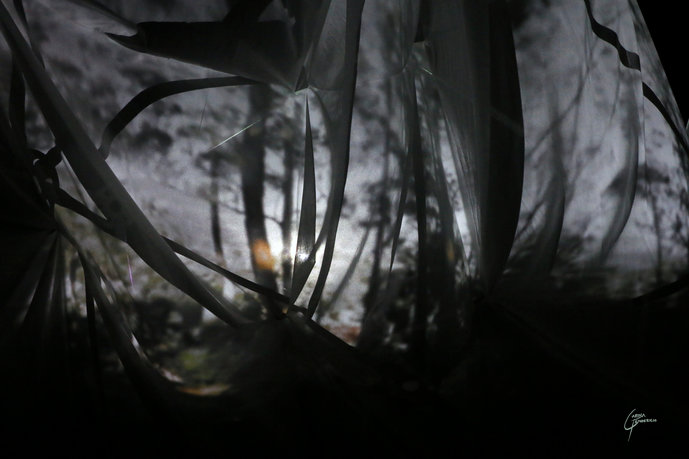

© Carina Fendrich


© Carina Fendrich


© Carina Fendrich


© Carina Fendrich
Theater architectures are made to exclude reality and everyday life and to create a stable space of security for creative expression and experience as soon as one enters it, or as soon as there is permission to enter it, e.g., by buying a ticket or taking a seat. But these walls of security for some always mean the exclusion of others. Set designers work for spectators as creators of a decipherable code. They create a medium that creates, promotes and maintains communication between the staging and the viewer.
The perception of the atmosphere only succeeds through an experiencing subject in the space. An atmosphere only emerges through bodily presence (cf. Rodatz 2010). A place does not possess its own atmospheric mood. Only through the positioning of a perceiver can the atmosphere appear. It is the field of tension between space and the experiencer, it enters into a relationship with it, so to speak. For this reason, the three-dimensional experience of a production is indispensable. The body must be placed in relation to the designed space. In addition to the sensual design of the space, stage designers have the task of influencing the positioning of the perceiver. The physical movement in the space can be manipulated by design elements, such as angles of view, postures, heights and depths, closeness and distance.
- Excerpts from the manifesto "For a perception-centered spatial theory in theater" Carina Fenderich, 2021.
How can theater be made more visible? To what extent are theater spaces sensually playable? What is the relation of the spectator's body to the staging? What role does perception play in the experience of a play? Can spaces tell stories? These and other questions were explored, answers sought and the findings translated into a spatial installation. The result is an immersive, sensory representation of Plato's Allegory of the Cave within a geodesic dome, inspired by Buckminster Fuller. Stimuli are scattered visually, auditorily, and even olfactorily, allowing the action to be physically perceived. The experience of the representation is heightened, to the point of an immersive experience. Based on this spatial model, further considerations can be made about a borderless, transparent architecture for theater in public spaces.
"The theater experience separates exterior and interior space only by a translucent membrane, whereby movements and shadows are perceptible from the outside when the interior is illuminated, thus arousing curiosity in passersby. Interior and exterior are separated as if fused, and the threshold to parallel realities is easily crossed."
The diploma is ultimately a far-reaching exploration of a body-space or subject-space relationship, specifically in the field of theater, and a demonstration that a conscious sensory manipulation of spatial atmosphere is necessary to create a theater experience.
Supervision: Constanze Fischbeck, Thomas Rustemeyer